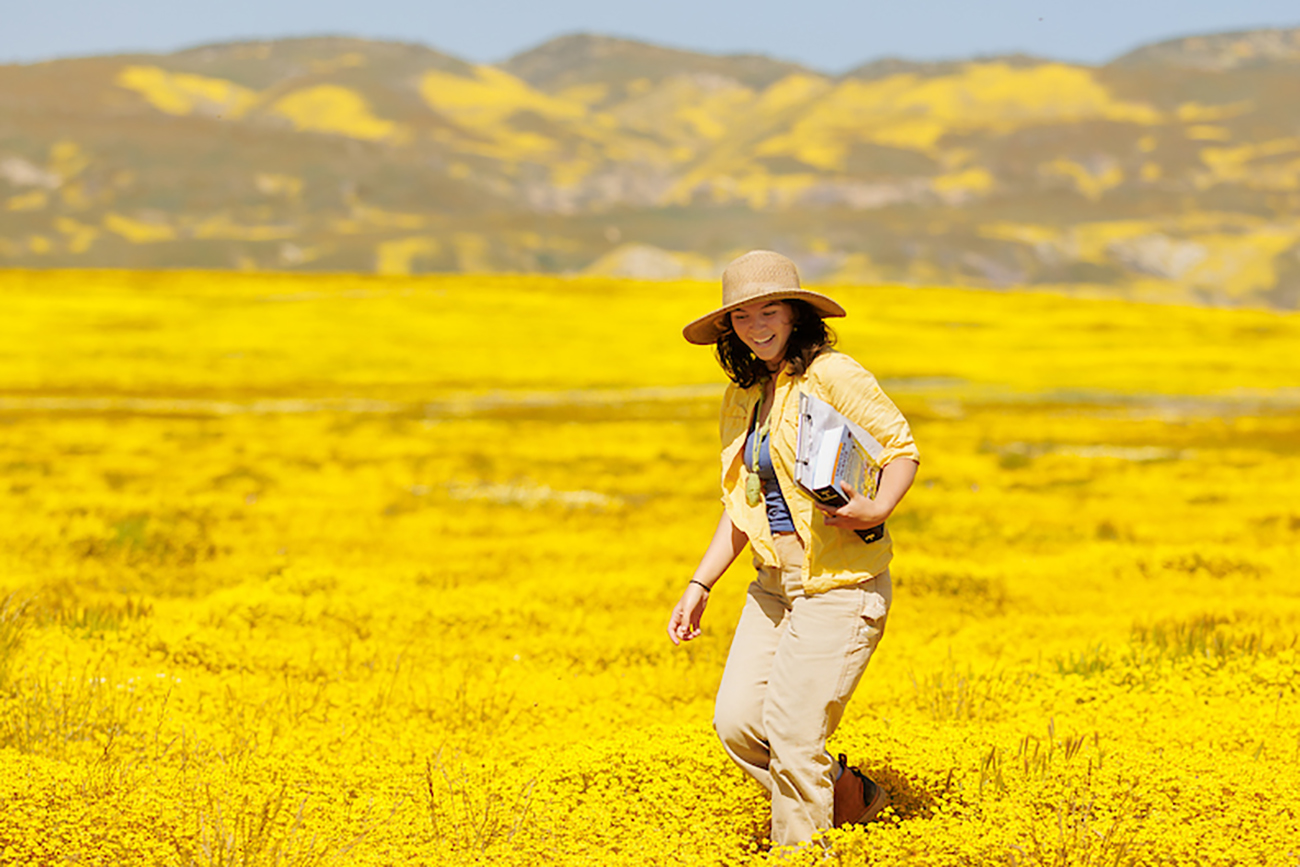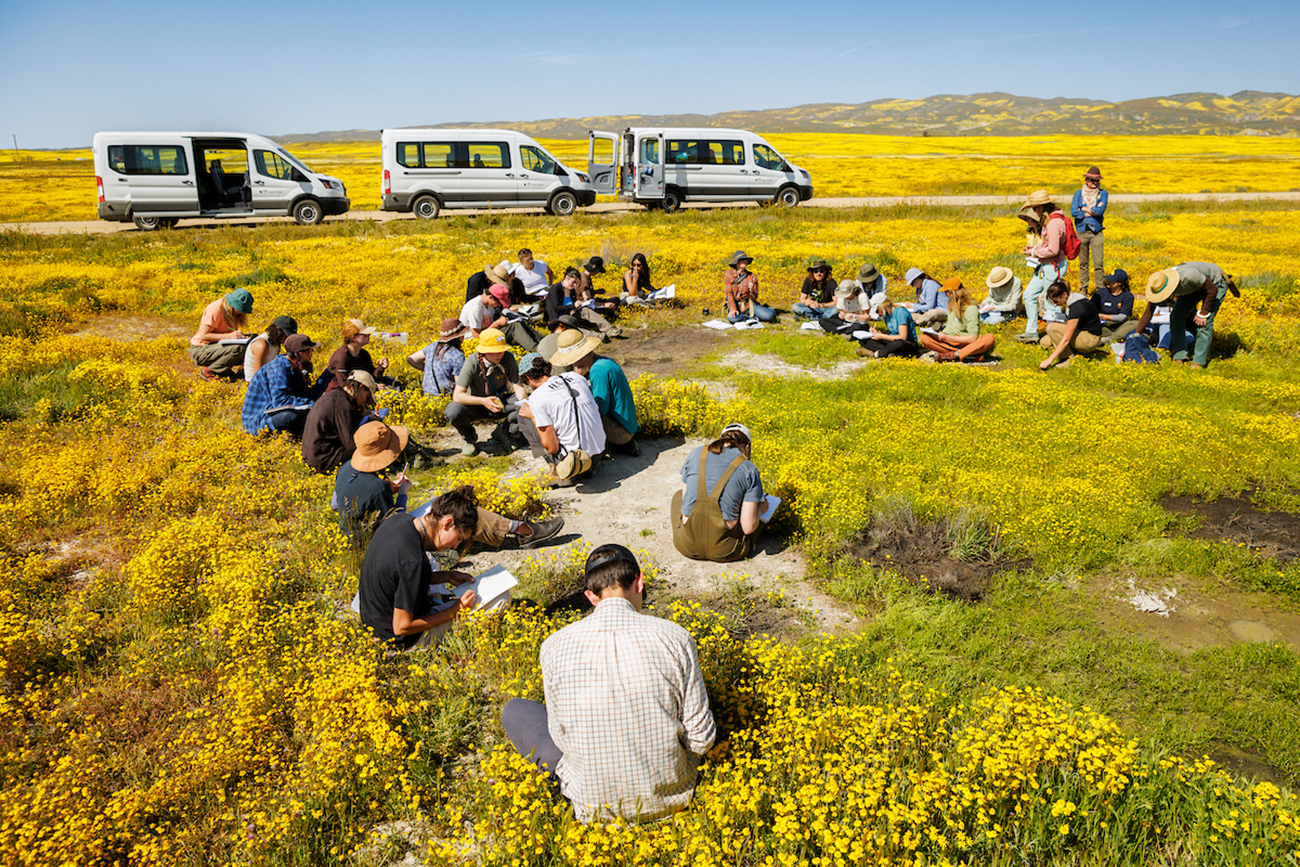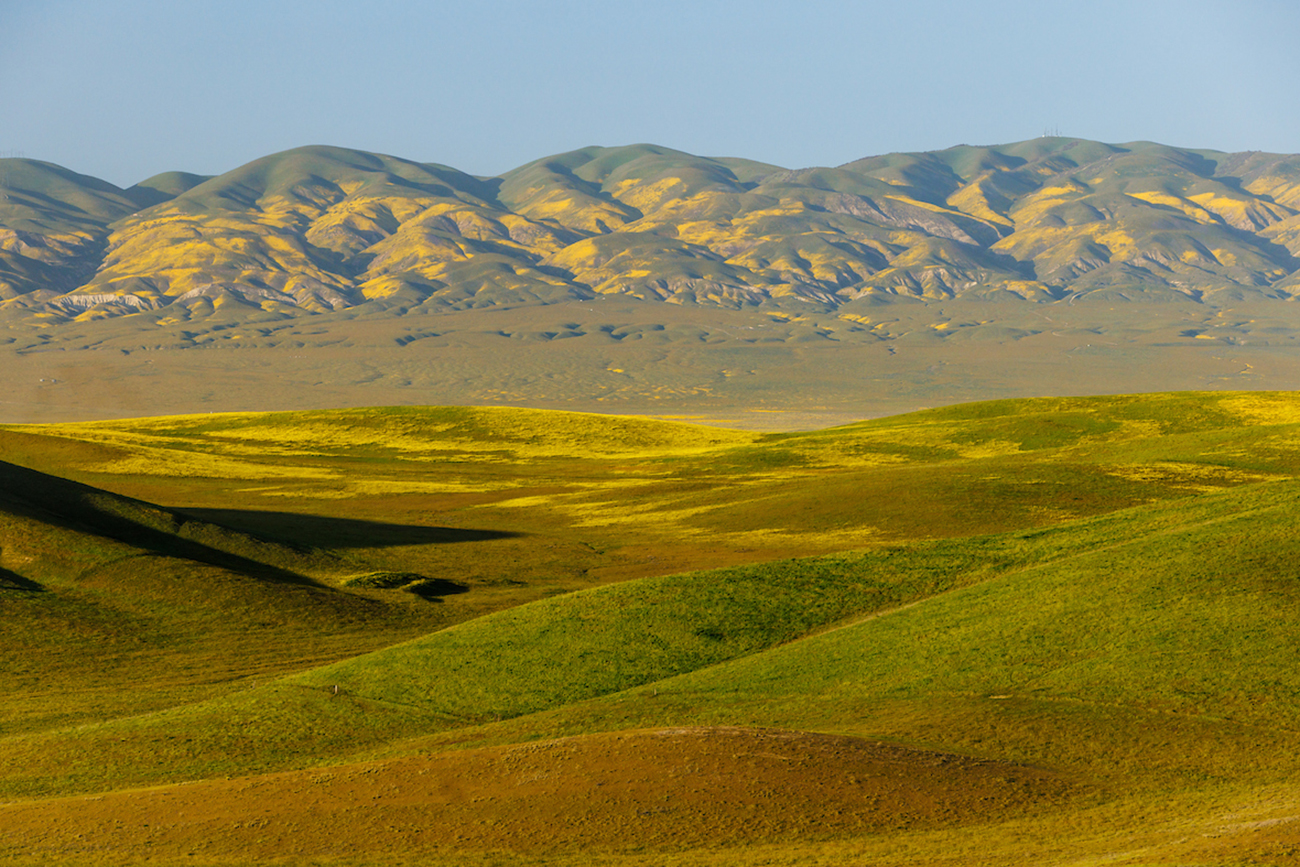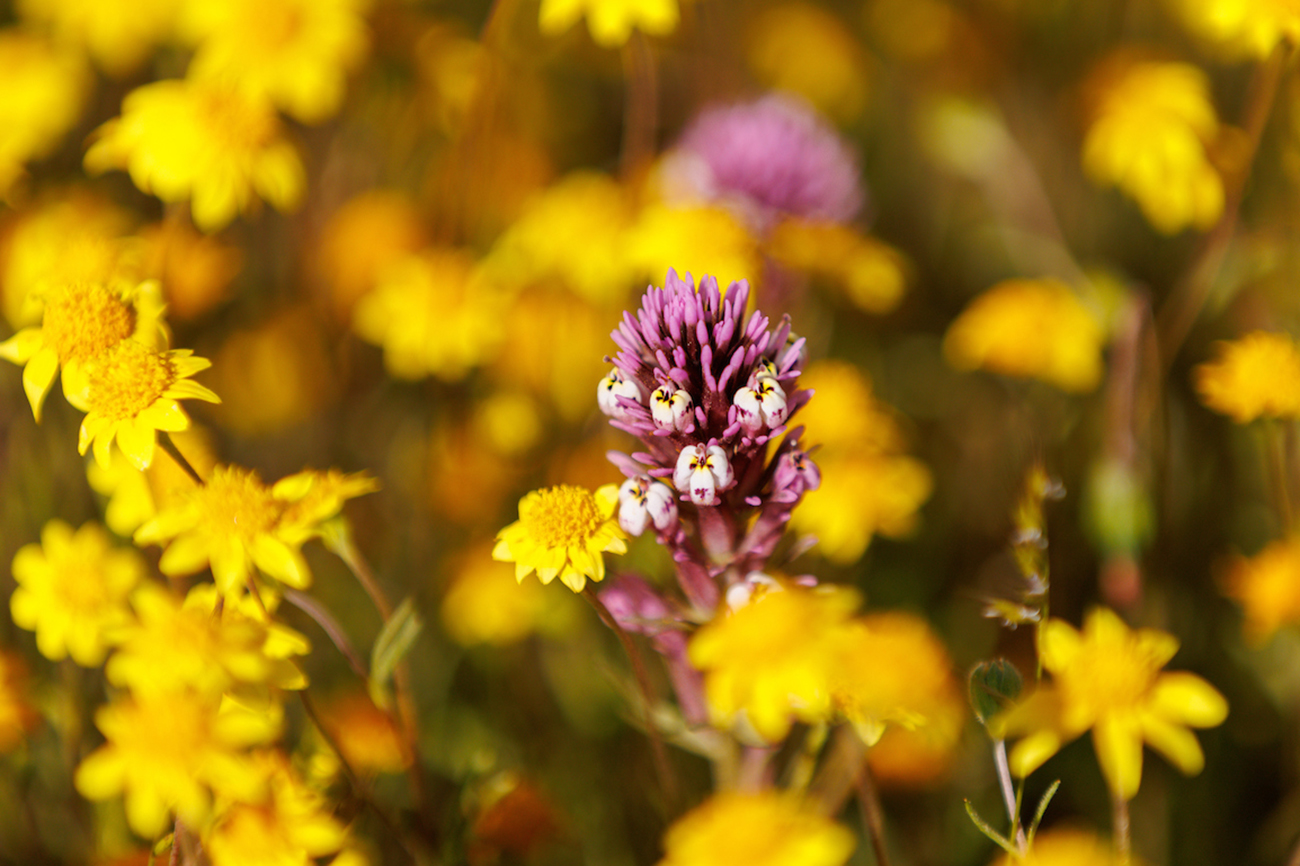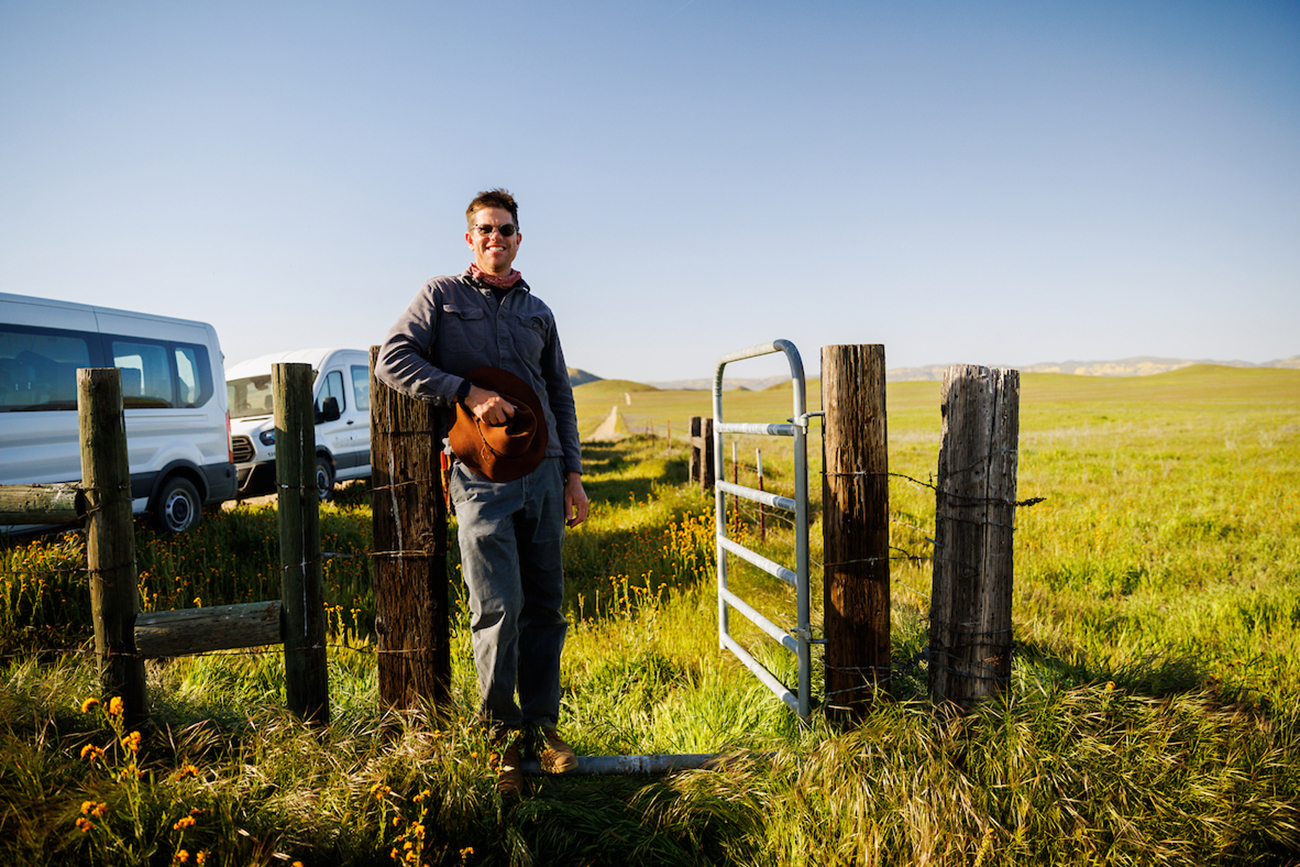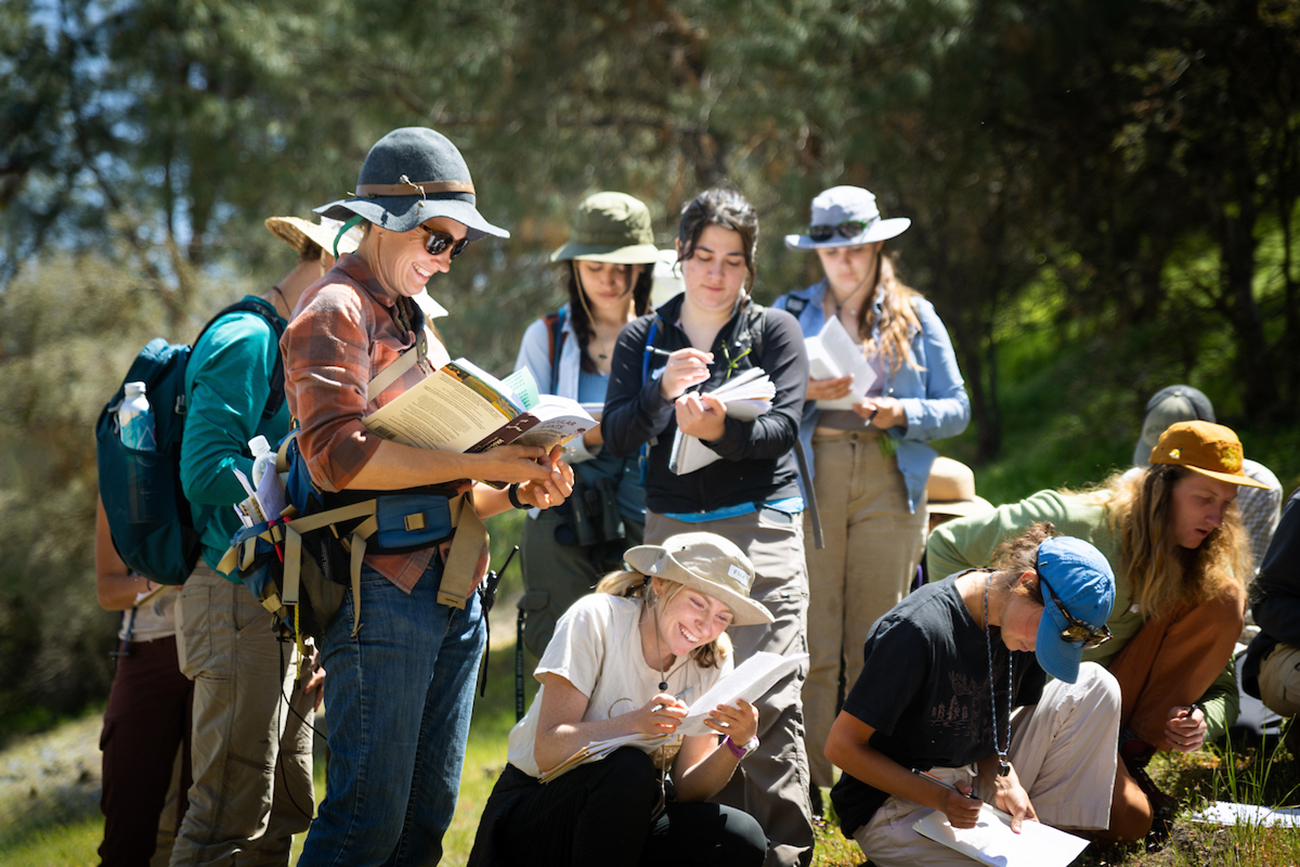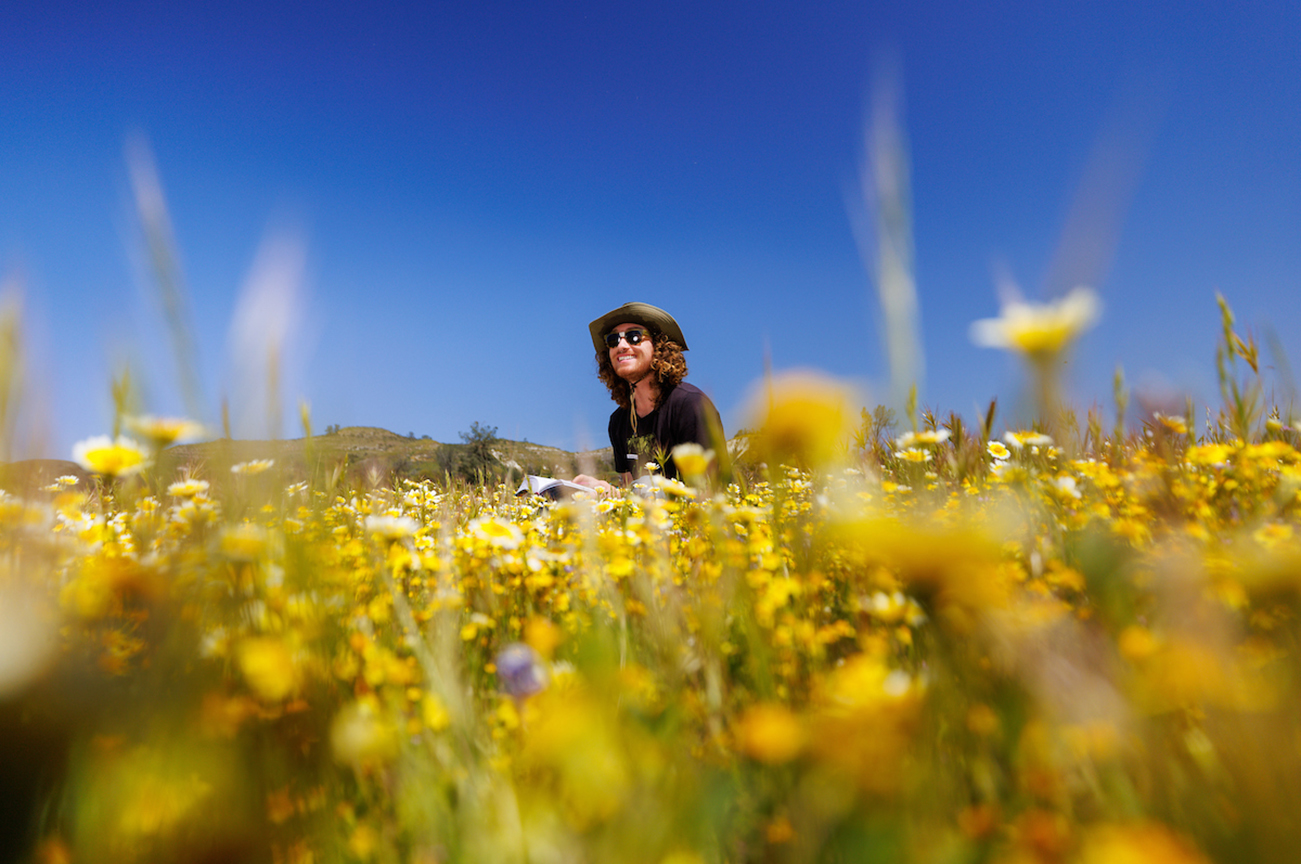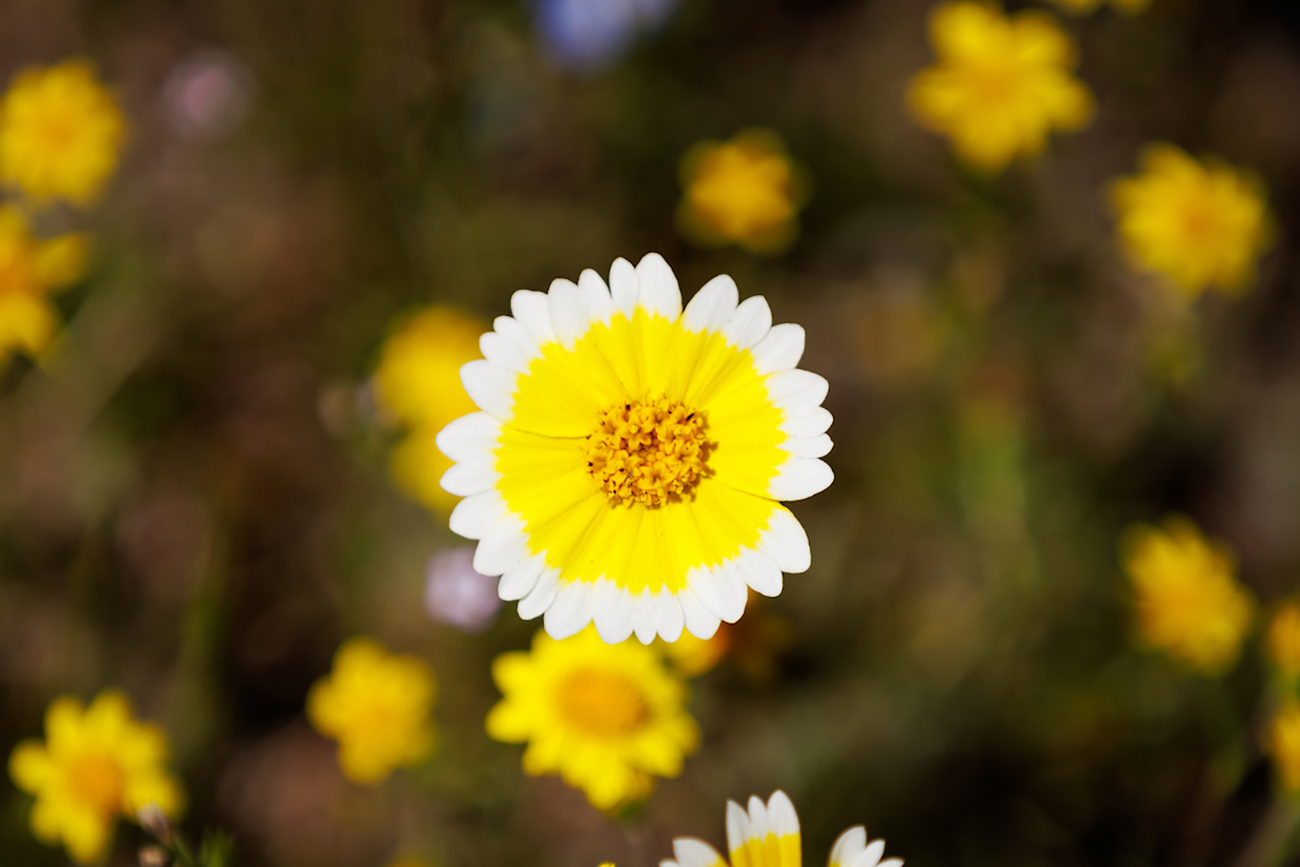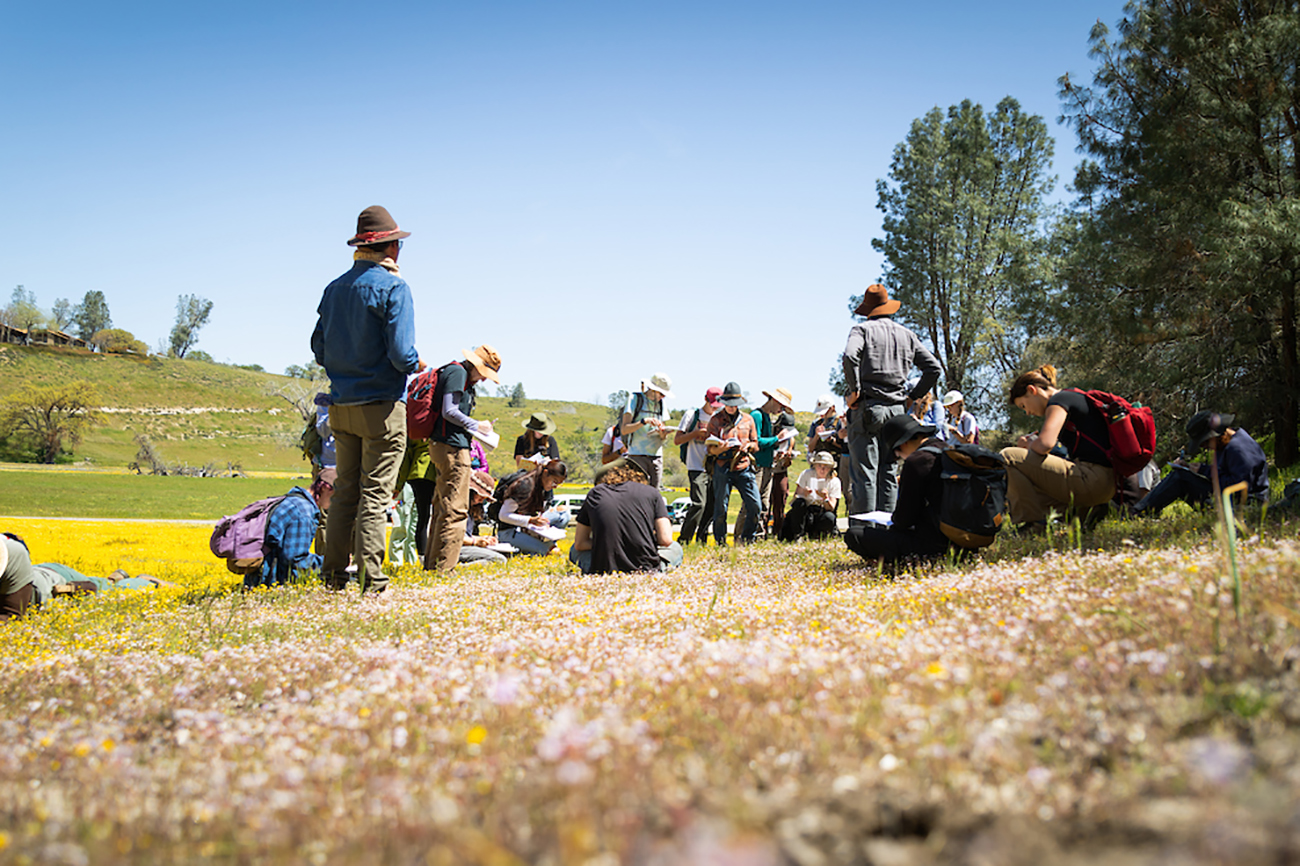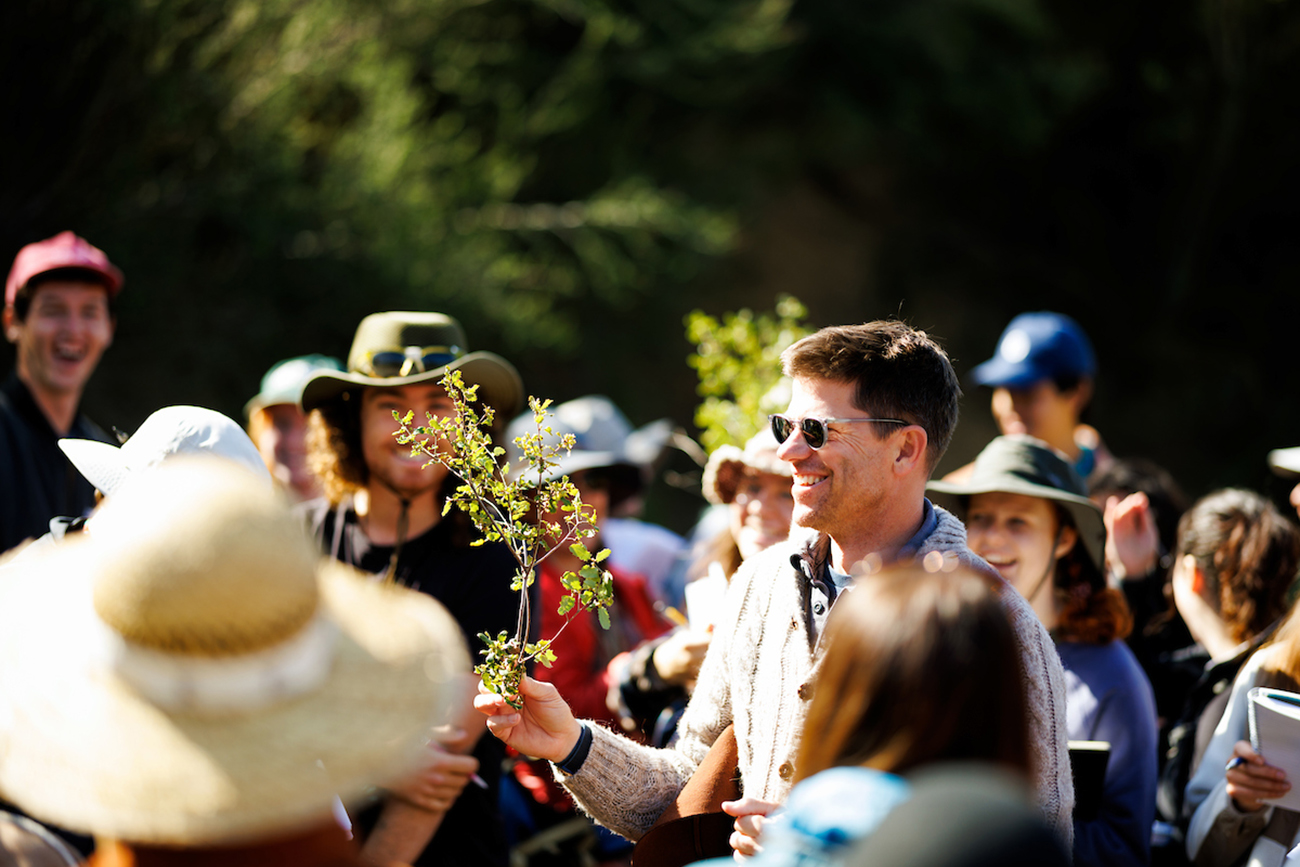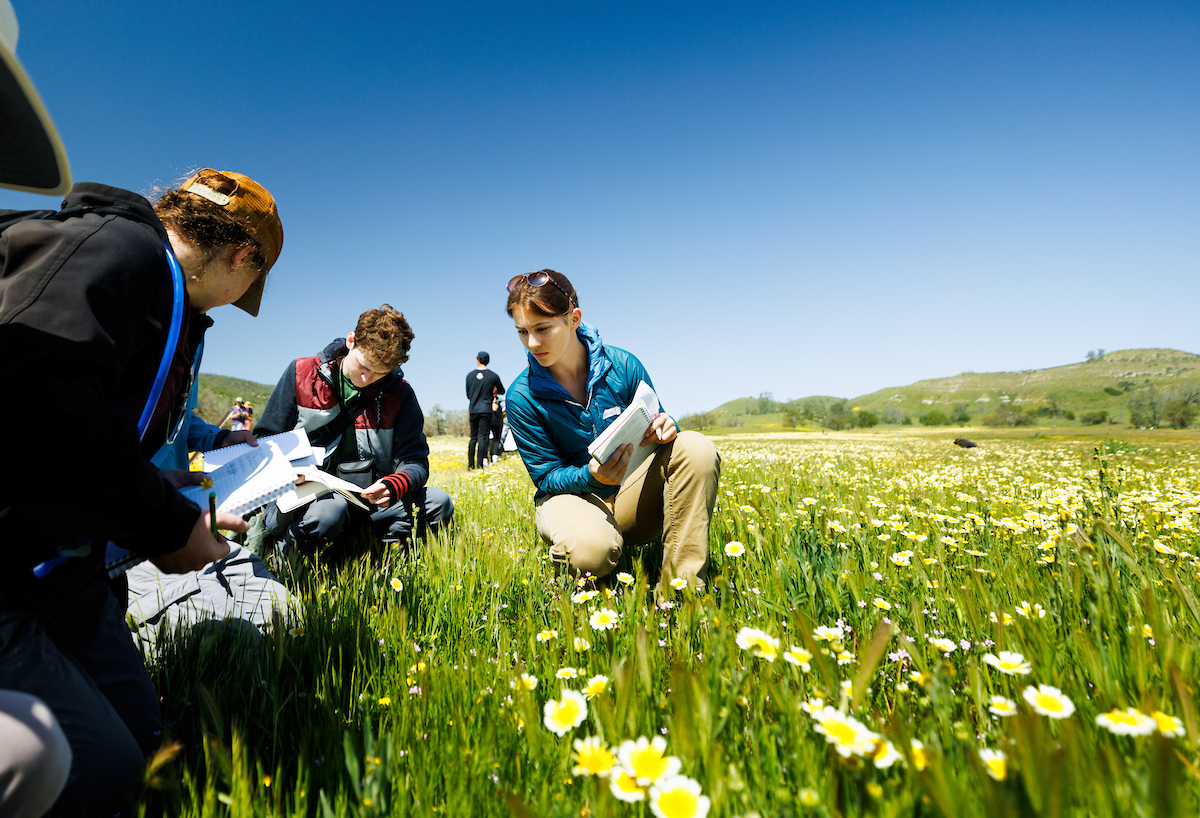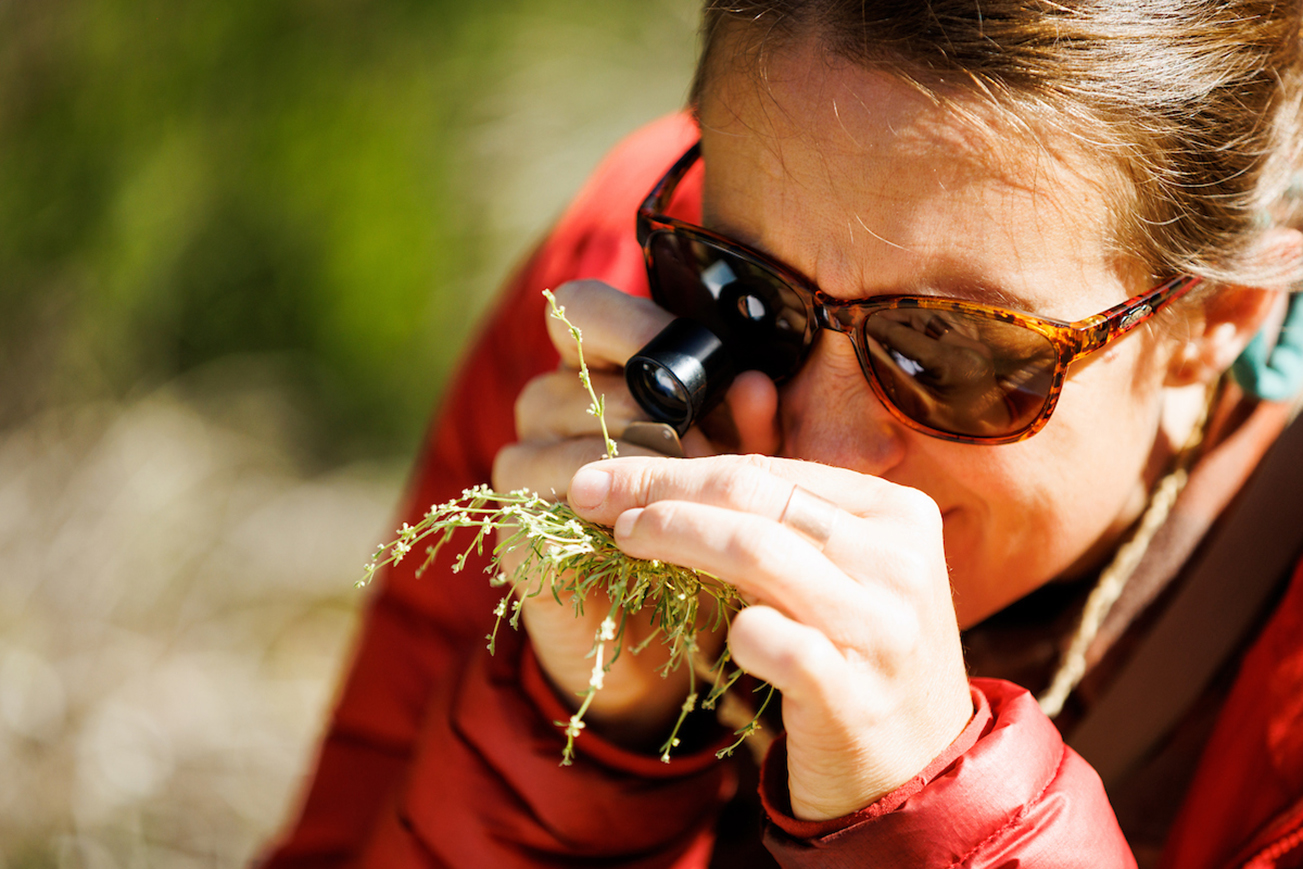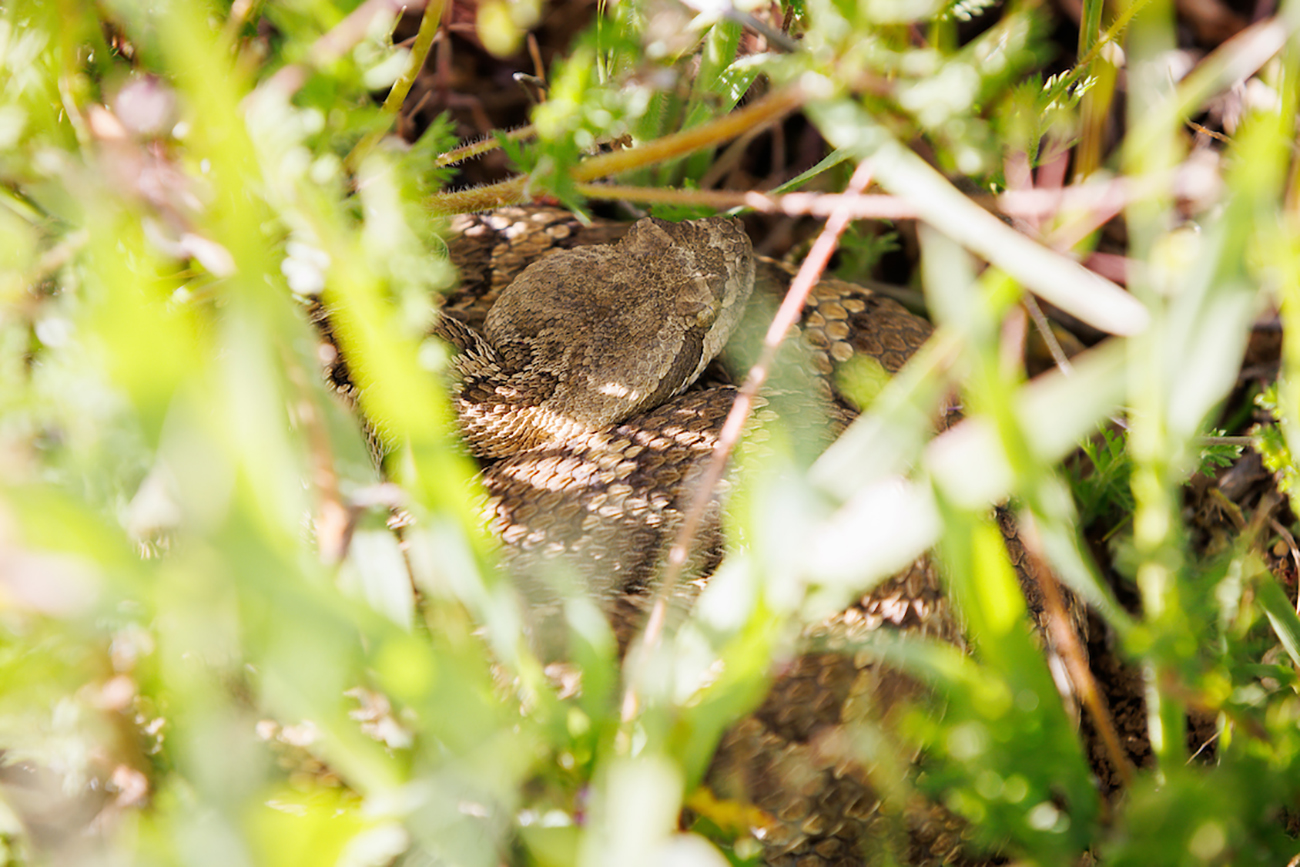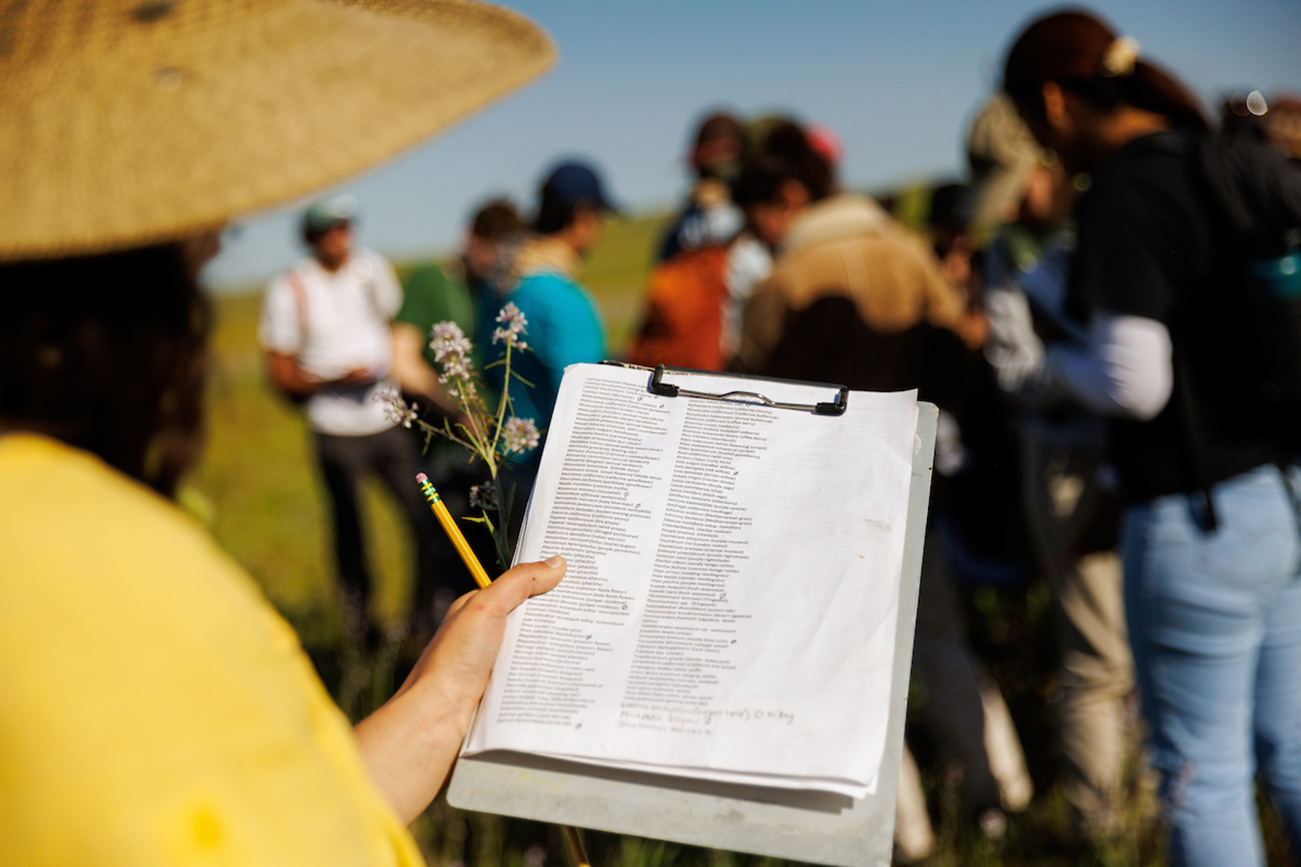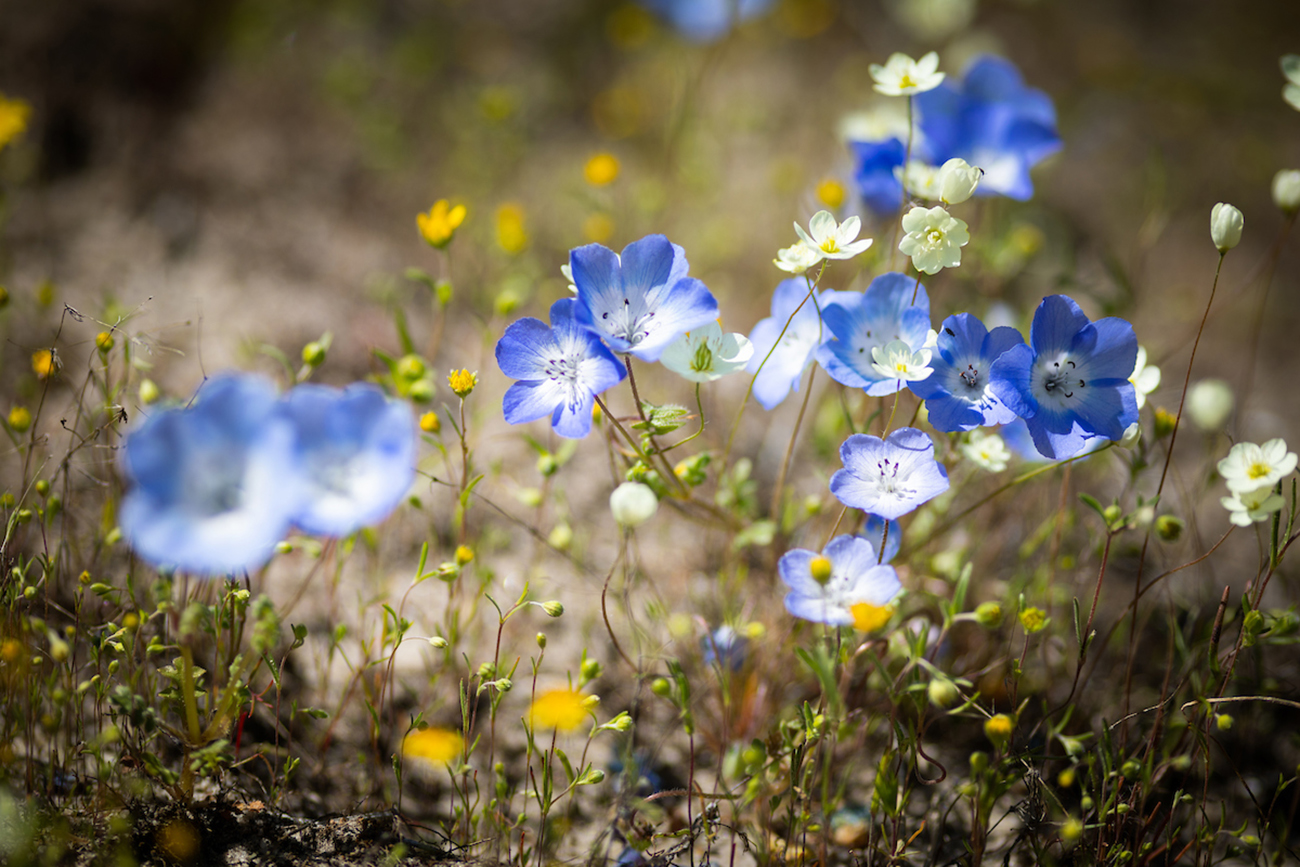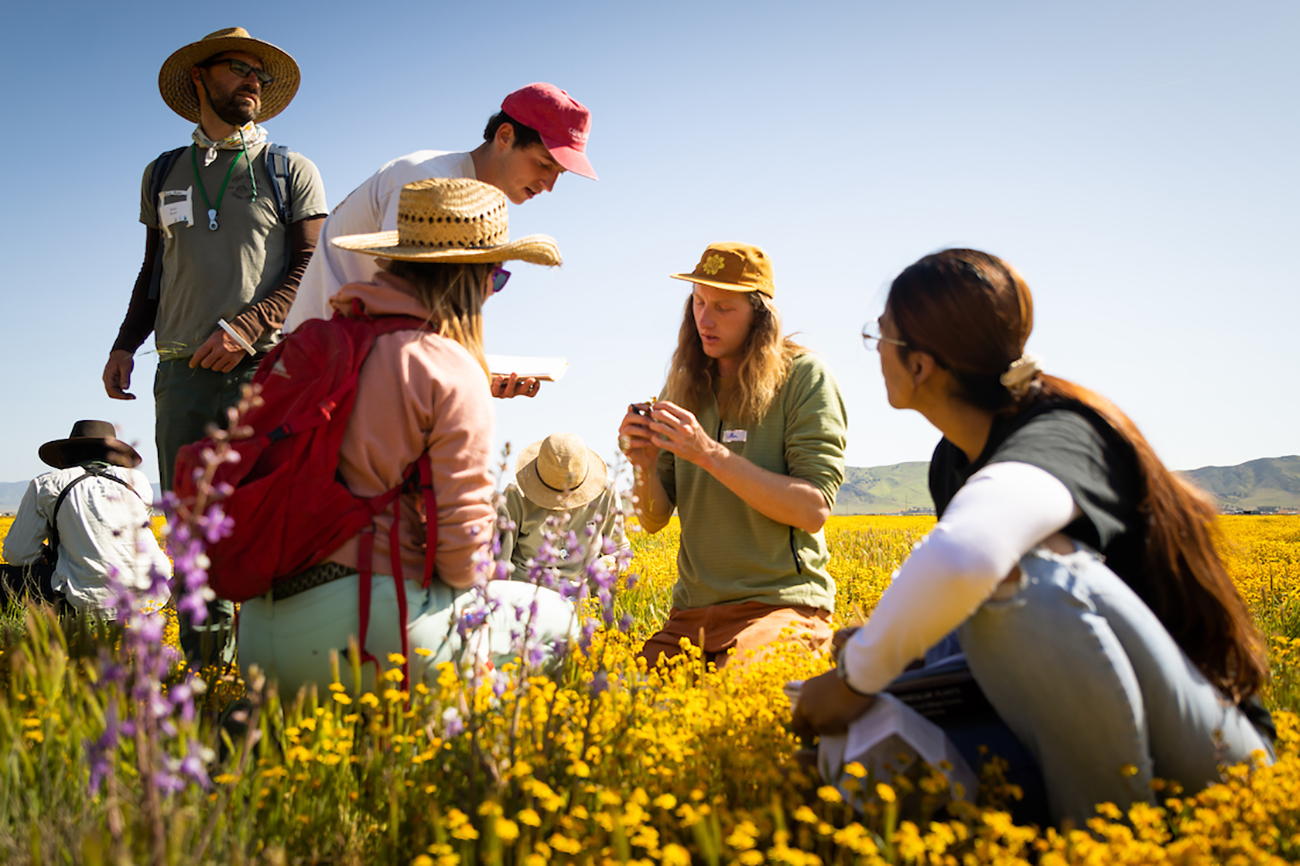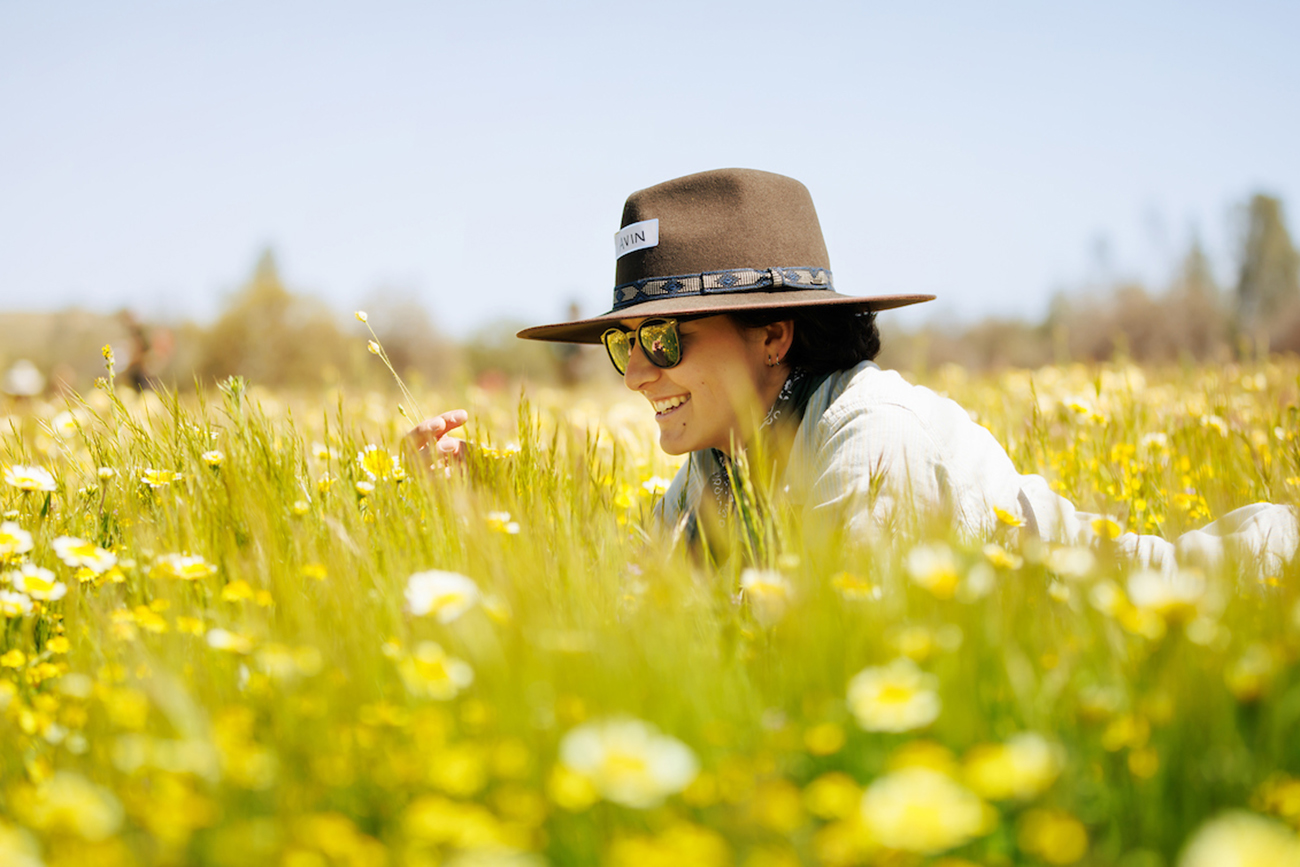
Following a historic rainy season in California, Cal Poly botany students got a chance to get up close and personal with one of the state’s most spectacular seasonal phenomena: a wildflower superbloom across the nearby Carrizo Plain.
As part of the upper-division Field Botany course, 45 students joined professors Matt Ritter and Jenn Yost on an overnight camping excursion to survey the floral abundance of eastern San Luis Obispo County.
“We’re training these students to do a very specific thing, which is to be able to interpret locations in the natural world from a botanical point of view and get to know the ecology of the place,” Ritter said. “We’re focusing their attention on organisms that are around them to look at the details, and that’s what leads to an awesome appreciation of the natural world.”
The tour stopped at Shell Creek Road, a popular scenic spot for wildflower watchers in the hills behind Santa Margarita, where the students mingled with unusually large groups of visitors drawn by the extraordinary bloom. From there, the group traveled east onto the Carrizo Plain, where this winter’s extended rainfall has transformed the normally desert-like plain into a vast rainbow-toned garden.
“The rain year has been really, really incredible — last year this field trip didn’t look anything like this,” said Avin Niknafs, a recent biology graduate who is now experiencing this class for a second time as a teaching assistant. “While there was still all the magic and the amazing plants to see, this year is a much more bright and vibrant showing.”
The trip last year was part of what convinced Niknafs to focus on a career in botany, for which she’s beginning a master’s program at Cal Poly.
“Coming out here and seeing everything in the field as opposed to just being in a lab, it really opened my mind to the possibility of being a scientist — that I don’t have to sit and do research in front of a microscope in a very sterile environment,” she said. “I can be out there seeing all sorts of new things. I just absolutely fell in love with the material and with the connections to the environment and with watching other people make those connections too.”
That transformational experience is exactly what Ritter and Yost hope to provide to their students with trips like these.
“When you experience the beauty of nature, your curiosity is piqued — your passion is ignited,” said Yost. “These students might not all go on to work in a botanical profession, but the experience stays with them so that they stay fascinated by natural spaces and they’ll care about what species are out there, and they’ll spend their whole lives figuring it out.”


